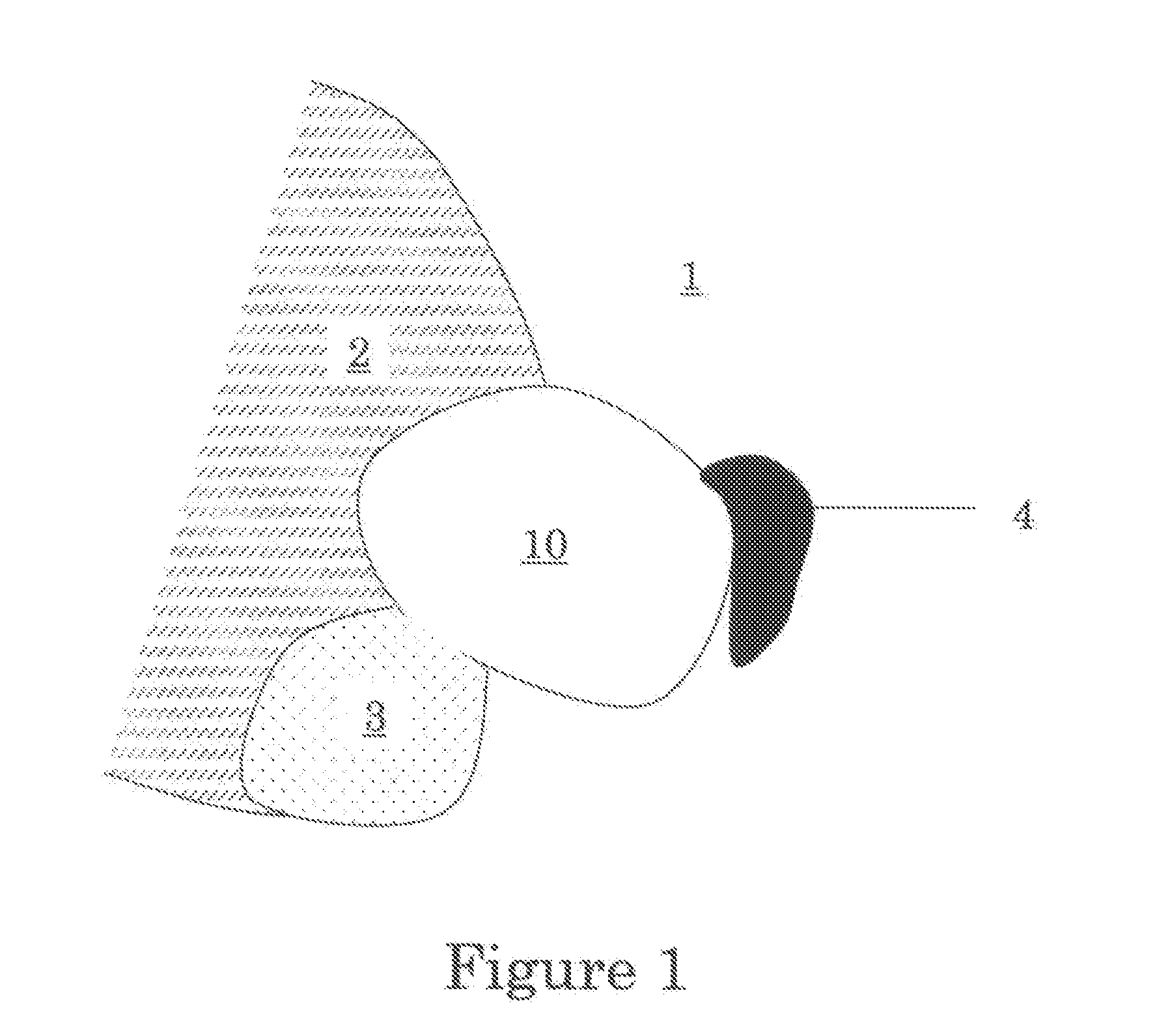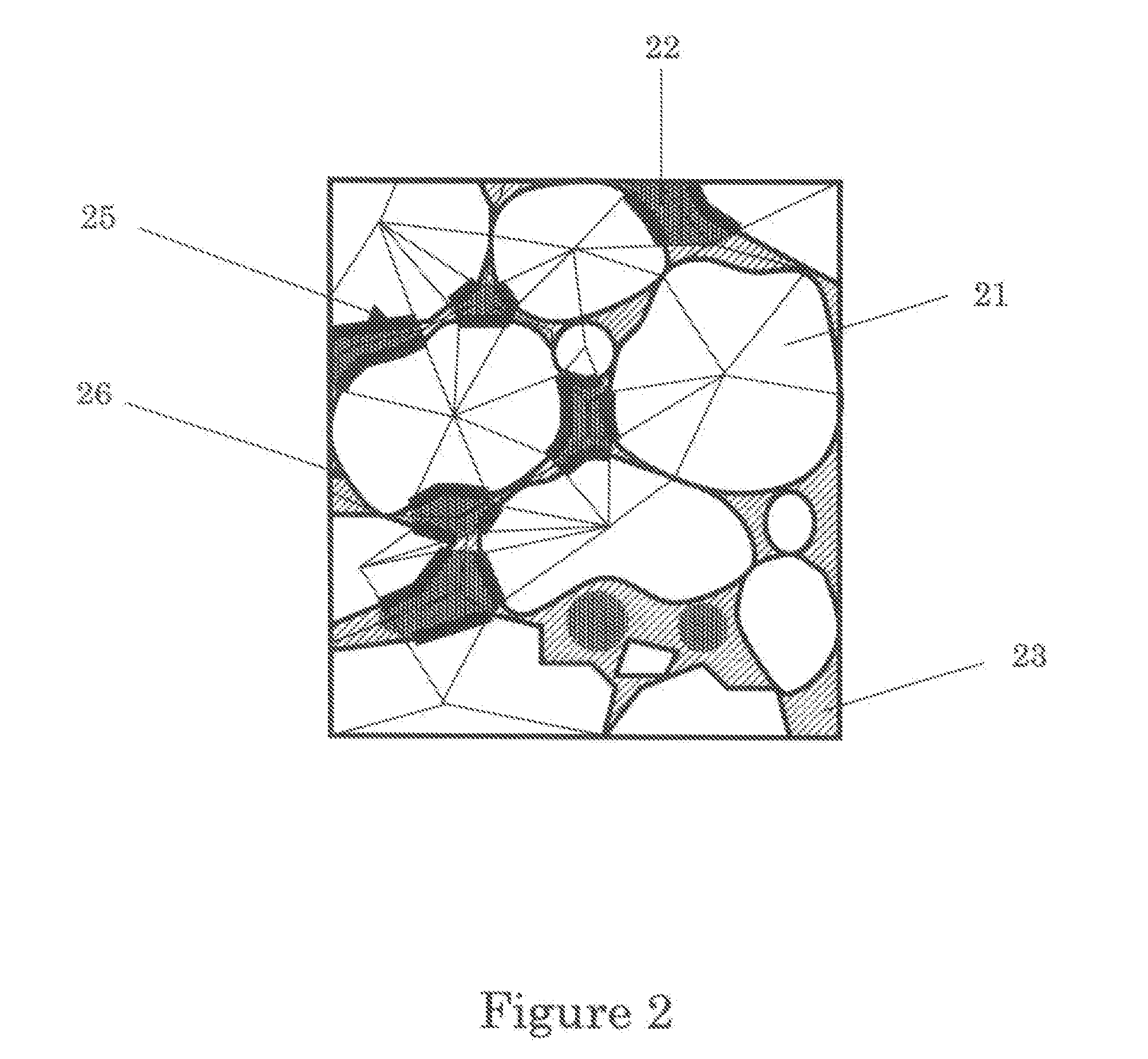Method and Apparatus for Measuring the Wettability of Geological Formations
a geological formation and oil wettability technology, applied in the field of geological formation characterization, can solve the problems of wasting time and money, unable to use a fixed formula to calculate the saturation of resistivities and porosities to estimate the reserves of a new field, and requiring a costly and time-consuming coring campaign and core analysis study
- Summary
- Abstract
- Description
- Claims
- Application Information
AI Technical Summary
Benefits of technology
Problems solved by technology
Method used
Image
Examples
Embodiment Construction
[0031] First of all, it is of prime importance to define the term “wettability”. Referring to FIG. 1, any point of the inner surface of the pore of a porous formation 10 can be in direct contact with water 1, oil 2, gas 3 or hydrocarbon in solid form 4 such as bitumen and asphaltenes. The fraction of the total porous medium surface covered with water (water-wet) is called the structural water-wetting index J. The fraction of the surface covered with oil is Y the fraction covered with tar or asphaltenes is YT and the remaining surface fraction is YG and one has Jw+YO+YT+YG=1. A pore can have its surface partially covered by water and partially by oil, but we expect also to find pores entirely water-wet or entirely oil-wet. It is simpler to consider the water-wetting index Jw and the remaining fraction 1−Jw. In the rest of the document, we will define 1−Jw to be the “oil-wetting index” J to be understood as the hydrocarbon-wetting index with J+J=1.
[0032] With the above definitions, i...
PUM
 Login to View More
Login to View More Abstract
Description
Claims
Application Information
 Login to View More
Login to View More - R&D
- Intellectual Property
- Life Sciences
- Materials
- Tech Scout
- Unparalleled Data Quality
- Higher Quality Content
- 60% Fewer Hallucinations
Browse by: Latest US Patents, China's latest patents, Technical Efficacy Thesaurus, Application Domain, Technology Topic, Popular Technical Reports.
© 2025 PatSnap. All rights reserved.Legal|Privacy policy|Modern Slavery Act Transparency Statement|Sitemap|About US| Contact US: help@patsnap.com



